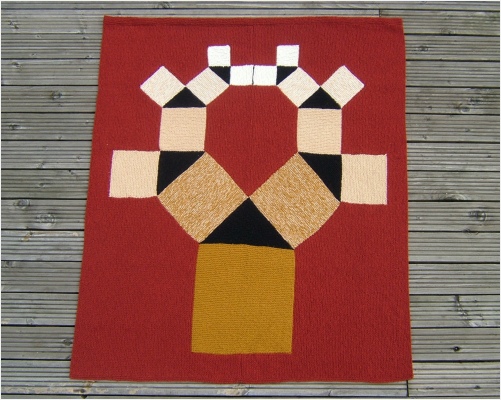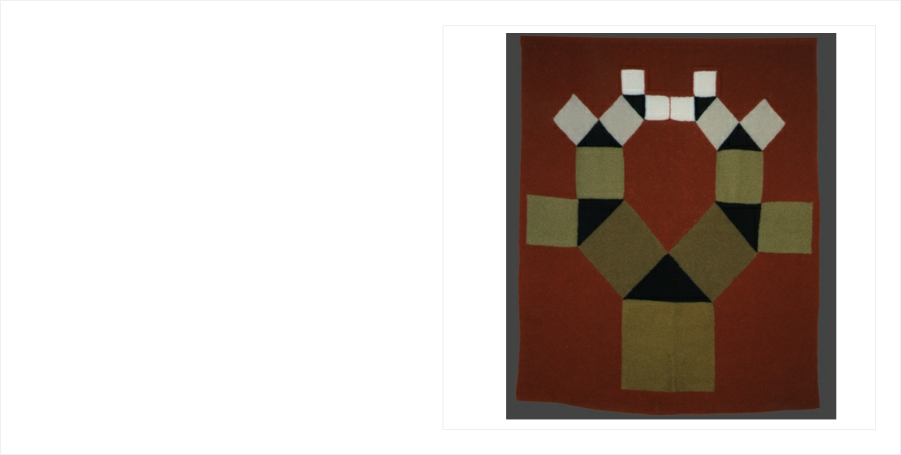

Click to read general information about afghans



Buy a pattern
for this afghan
on the order form
 Buy now
Buy now

PYTHAGORAS TREE
Pythagoras Tree represents Pythagoras’ Theorem in the form of a fractal ‘tree’ design.
‘The square on the hypotenuse is equal to the sum of the squares on the other two sides.’
The original, which was bought by the Mathematics Collection of the London Science Museum, can be seen below.


KNITTING INFORMATION
The first version (below) was knitted in Aran yarn; the second (above) in DK, using two strands together, to produce a toning range of colours.
The pattern includes ideas for more complex versions of the tree.

Scroll down for more information about
Pythagoras Tree

RELATED DESIGNS
PYTHAGORAS AFGHAN
PYTHAGORAS CUSHION
PUPPETS

CONSTRUCTION INFORMATION
The ‘tree’ is knitted in one piece by picking up stitches from existing shapes. Only one yarn is used at a time.
The surround is knitted on afterwards

Pythagoras’ Theorem states that the area of the squares on the two shorter sides of a right-
The black shapes in the design are right-
The design repeats itself with the small squares becoming the larger squares for the next part of the tree. This is similar to the way a fractal goes on repeating with smaller and smaller copies of itself. It is not a true fractal. Some parts of the fractal have been missed off to make the design fit on the afghan and to make it more closely resemble a tree.
In knitting terms, each small square has exactly half as many stitches to knit as the large square on the same triangle. There are five sizes of square, getting ever smaller.